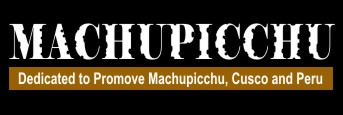|
1.-
Discovery
2.- Hiram Bingham
3.- Giesecke
4.- In fact, It was not
vitcos
5.- Government Expeditions
6.- Cultural Pillaging
Machu Picchu, sacred city of the Incas, is
accessible by train from Cuzco, or via a trek along the Inca Trail,
in Peru. The "city" was never discovered by the Spanish
conquistadores and remained lost for centuries.
Machu Picchu is an architectural jewel. The Beauty and Mystery of
it's walled ruins, once palaces of the finest Inca stone work, are
augmented even more by the lush, almost virginal landscape of the
surroundings.Green jungle flora suffuses the abrupt topography.
Orchids add a strange brilliance.
The ruins blend harmoniously amid the narrow and uneven topography.
One thousand, three hundred feet below, snakes the Urubamba Canyon
and its roaring river.
Machu Picchu sits nearly 8,000 feet above sea level, on top of a
ridge between two peaks of different size. The smaller peak, called
the "Huayna Picchu", is the one most often seen in photographs of
the ruins.
With the passing of the centuries, the ruins' original name has been
forgotten.The name "Machu Picchu" comes simply from its geography.
It literally means "old peak", just as "Huayna Picchu" is "young
peak". The more accurate translation relates, however, to the
concept of size, with Machu Picchu as the " bigger peak" and Huayna
Picchu,the"smaller peak".
With its discovery in 1911, Machu Picchu made its debut as an
authentic archeological enigma. Its purpose continues to intrigue,
with mysteries that perhaps will never fully be unraveled.
It was Hiram Bingham who, in charge of a Yale University expedition,
discovered Machu Picchu on July 24, 1911. Bingham's goal had
actually been to locate the legendary Vilcabamba which was the
capital of the governing Inca's descendants. They resisted the
Spanish invaders and used Vilcabamba as a fortification between 1536
and 1572.
But on penetrating the Urabamba Canyon, in the desolate site of
Mandorbamba, Bingham's expedition learned from a peasant named
Melchor Arteaga that the hill Mahcu Picchu, at the top, held
important ruins. To reach them meant ascending a steep slope covered
with dense vegetation. Even though skeptical- the expedition was
familiar with the many myths about "lost cities"-Bingham insisted on
being guided to the spot. Once there, a child from one of the two
families that lived there, led him to imposing archeological
structures covered by tropical vegetation and abandoned centuries
ago.
As an astonished Bingham noted in his diary: "Would anyone believe
what I have found?..."
How did this center of Inca culture hide itself in the mountain
jungle? From our knowledge of Greek, Egyptian and other early
civilizations with written records, it is hard to understand how
such a fantastic site could have been hidden from the Spanish. Yet
until its discovery in the 1911, Machu Picchu, "the lost city of the
Incas", remained forgotten for 400 years.
Actually, Machu Picchu is not a city at all. It was built by
Pachacuti Inca as a royal estate and religious retreat in 1460-70.
Its location -- on a remote secondary road in nearly impassable
terrain high above the Urubamba River canyon cloud forest -- ensured
that it would have no administrative, commercial or military use.
Any movement in that direction to or from Cusco and the Sacred
valley upriver would have been by other Inca roads, either the high
road near Salcantay or by the Lucumayo valley road. Travel was
restricted on these roads except by Inca decree.
After Pachacutec Inca's death, Machu Picchu remained the property of
his kinship group, who were responsible for maintenance,
administration and continued building. As an extraordinary sacred
site (location as well as buildings), it was visited by Topa Inca
and the last great ruler, Huayna Capac, although each in turn built
their own estates and palaces. Few outside the Inca's retainers knew
of its existence. |

Machupicchu |
